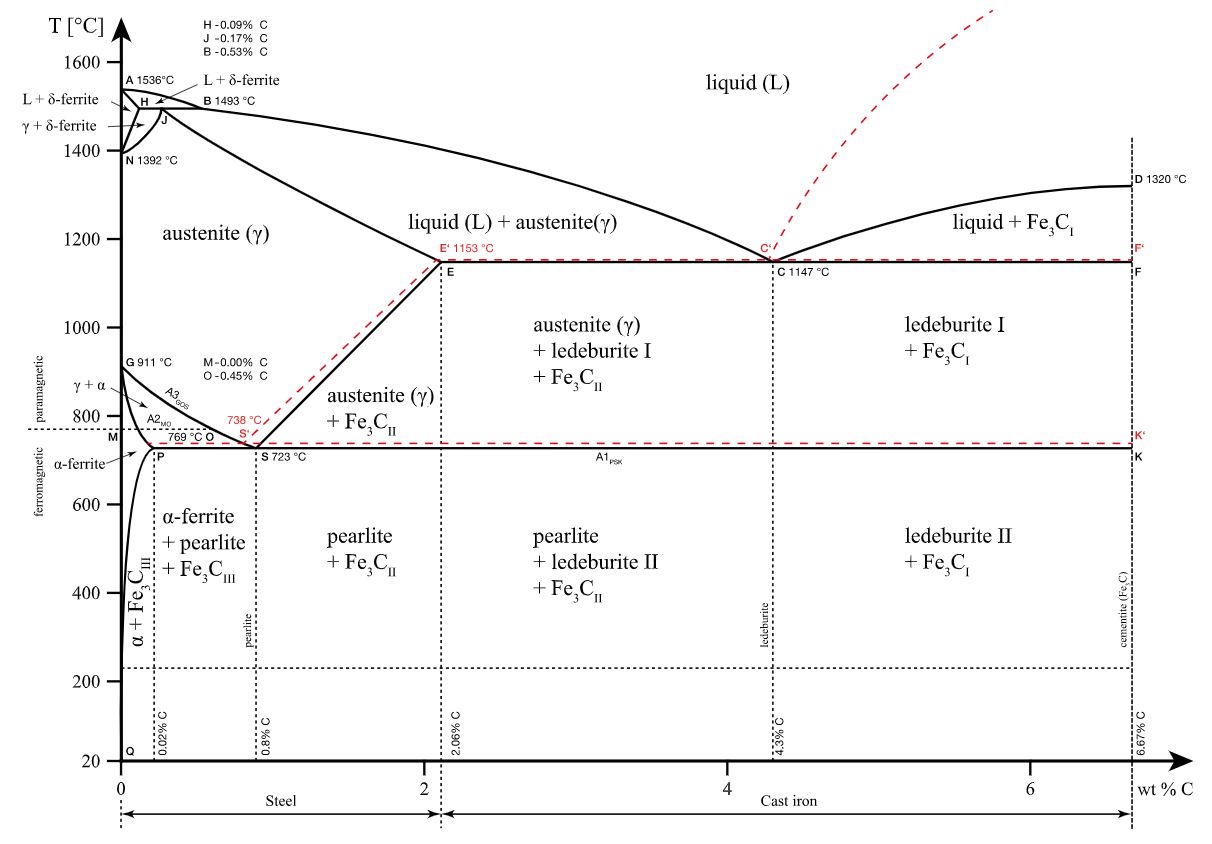
The eutectoid point is a fascinating concept in the field of chemistry that holds great significance. It refers to the temperature at which a eutectoid mixture undergoes a phase transformation, resulting in the formation of two new phases. This phenomenon occurs in certain alloys and compounds, and understanding it is essential in various industrial processes and material science applications.
In this article, we will explore 11 intriguing facts about the eutectoid point that will not only enhance your knowledge of chemistry but also give you a deeper understanding of this remarkable occurrence. From its historical significance to its practical applications, we will dive into the world of eutectoid point, uncovering the mysteries behind its behavior and shedding light on its important role in the study of materials and their properties.
Key Takeaways:
- The eutectoid point is a specific temperature where a solid phase in an alloy transforms into two new solid phases, impacting the material’s properties and applications, especially in steel production and heat treatment processes.
- Understanding the eutectoid point is crucial for designing alloys and studying phase transformations, offering valuable insights for engineers and scientists to develop innovative material solutions for various industries.
Definition of Eutectoid Point
The eutectoid point is the temperature at which a eutectoid reaction takes place, leading to the simultaneous formation of two different solid phases from a single solid phase in an alloy system.
Unique Composition
The eutectoid point represents a specific composition of elements in an alloy system where the eutectoid reaction occurs.
Phase Transformation
At the eutectoid point, the original solid phase transforms into two distinct solid phases, with a specific ratio between them.
Temperature Dependence
The eutectoid point is influenced by the composition of the alloy system and will vary depending on the specific elements present.
Microstructural Changes
The eutectoid reaction at the eutectoid point results in a significant change in the microstructure of the alloy, which can impact its mechanical and physical properties.
Role in Alloy Design
The eutectoid point plays a crucial role in the design of alloys, as it determines the desired composition and temperature range for obtaining specific microstructures and properties.
Applications in Steel Production
The eutectoid point is particularly important in the production of steel, as it influences the formation of various phases, including pearlite, which contributes to steel’s strength and hardness.
Heat Treatment Considerations
Understanding the eutectoid point is vital for heat treatment processes, as it helps determine the optimum temperature and duration to achieve the desired microstructure and properties in a material.
Formation of Widmanstätten Structure
In some alloy systems, the eutectoid reaction can lead to the formation of a unique microstructure known as the Widmanstätten structure, which exhibits distinct patterns of different phases.
Importance in Material Characterization
Scientists and engineers utilize the eutectoid point to characterize and study the phase transformations in different materials, providing valuable insights into their behavior and performance.
Significance in Phase Diagrams
The eutectoid point is a critical feature in phase diagrams, serving as a reference point for understanding the formation of multiple phases and their relationships within an alloy system.
Understanding the eutectoid point and its associated phenomena is essential for researchers, materials scientists, and engineers involved in the design and development of alloys. By grasping the intricacies of this fascinating concept, we can unlock new possibilities in material engineering and create innovative solutions for various industries.
Conclusion
In conclusion, the eutectoid point is a fascinating phenomenon in the field of chemistry. Understanding its properties and applications is crucial for various industries, especially those involving metallurgy and material science. The eutectoid point plays a significant role in the transformation of materials, allowing for the creation of unique structures and properties.From its definition as the temperature at which a eutectoid reaction occurs, to its importance in the production of steel and other alloys, the eutectoid point holds great significance. It determines the microstructure and mechanical properties of materials, influencing their strength, hardness, and ductility.Exploring the eutectoid point further can lead to advancements in the development of new materials with enhanced properties. As researchers delve deeper into this subject, we can expect more breakthroughs in fields such as aerospace, automotive, and renewable energy, where materials with optimized characteristics are highly sought after.The eutectoid point continues to intrigue scientists and engineers alike, and its study will undoubtedly contribute to further advancements in the realm of materials science.
FAQs
1. What is the eutectoid point?
The eutectoid point is the temperature at which a eutectoid reaction occurs, leading to the transformation of a solid solution into two or more distinct phases.
2. How is the eutectoid point determined?
The eutectoid point is determined through experimental observations and the analysis of phase diagrams, which illustrate the relationship between temperature, composition, and phase transformations.
3. What are some applications of the eutectoid point?
The eutectoid point has significant applications in the production of steel and other alloys, where it governs the formation of desired microstructures and mechanical properties.
4. Can the eutectoid point be modified?
The eutectoid point is fixed for a given system and composition. However, by adjusting the alloy composition or employing different processing techniques, it is possible to manipulate the resulting microstructure and properties.
5. Is the eutectoid point relevant in fields other than metallurgy?
Yes, the eutectoid point is relevant in various industries, including aerospace, automotive, and renewable energy. It influences the development of materials with optimized characteristics for specific applications.
Was this page helpful?
Our commitment to delivering trustworthy and engaging content is at the heart of what we do. Each fact on our site is contributed by real users like you, bringing a wealth of diverse insights and information. To ensure the highest standards of accuracy and reliability, our dedicated editors meticulously review each submission. This process guarantees that the facts we share are not only fascinating but also credible. Trust in our commitment to quality and authenticity as you explore and learn with us.
